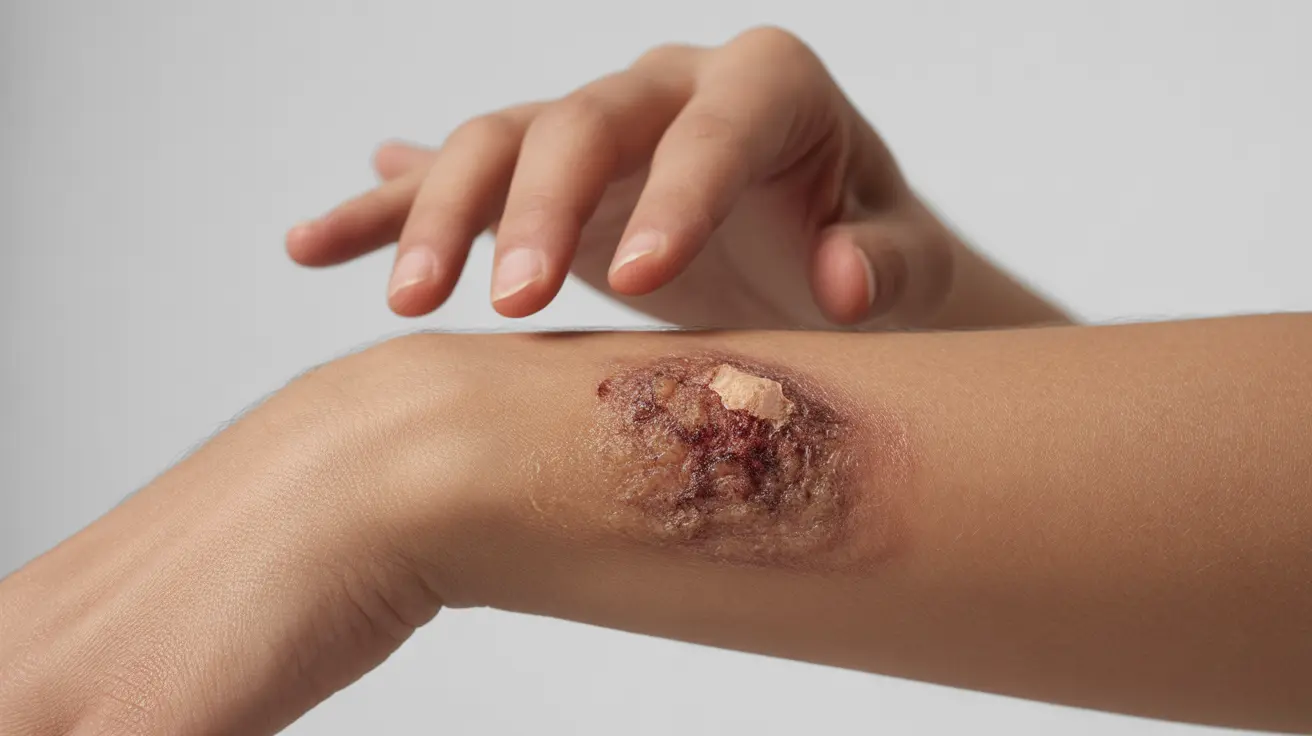When a wound begins to heal, your body forms a protective scab to shield the injured area and promote healing. However, many people find themselves habitually picking at these scabs, which can lead to various complications and delayed healing. Understanding what happens when you pick a scab over and over is crucial for maintaining healthy skin and preventing long-term damage.
This comprehensive guide explores the effects of repeated scab picking, potential complications, and effective strategies to break this harmful habit. We'll also discuss when to seek professional help and how to promote proper wound healing.
The Natural Healing Process and How Picking Disrupts It
When your skin experiences an injury, it immediately begins a complex healing process. A scab forms as part of your body's natural defense mechanism, creating a protective barrier that allows new skin cells to develop underneath. However, when you repeatedly pick at scabs, you interrupt this carefully orchestrated healing process.
Each time you remove a scab, you're essentially creating a new wound, forcing your body to restart the healing process from the beginning. This can significantly extend healing time and increase the risk of complications.
Physical Consequences of Repeated Scab Picking
Delayed Healing and Tissue Damage
Constant interference with the healing process through repetitive scab picking can lead to:
- Prolonged healing time
- Deeper tissue damage
- Increased inflammation
- Formation of larger wounds
- Disrupted collagen production
Risk of Infection
Every time you pick a scab, you create an opening in your skin's protective barrier. This increases the likelihood of bacterial infection, which may manifest as:
- Redness and swelling around the wound
- Unusual warmth in the affected area
- Pus or discharge
- Increased pain or tenderness
- Fever in severe cases
Psychological Aspects and Compulsive Behavior
For many people, scab picking goes beyond a casual habit and may indicate an underlying psychological condition. Dermatillomania, also known as excoriation disorder or skin picking disorder, is a recognized mental health condition that requires professional intervention.
Treatment and Prevention Strategies
Breaking the Picking Cycle
To stop picking scabs and promote proper healing, consider these effective strategies:
- Keep wounds covered with appropriate dressings
- Apply moisturizing ointments to reduce itching
- Wear gloves or bandages on fingers to prevent unconscious picking
- Practice stress-reduction techniques
- Keep hands occupied with stress balls or fidget toys
Proper Wound Care
Maintaining proper wound care is essential for preventing the urge to pick and promoting healing:
- Clean the area regularly with mild soap and water
- Apply appropriate antibiotic ointments as recommended
- Keep the wound environment moist but not wet
- Change dressings regularly
- Protect the area from further injury
Frequently Asked Questions
What happens to my skin and healing process if I pick a scab repeatedly?
When you repeatedly pick a scab, you force your body to restart the healing process each time, leading to delayed healing, increased risk of infection, and potential scarring. The constant disruption can damage developing skin cells and affect the formation of new tissue.
Can picking scabs over and over cause infections or permanent scars?
Yes, repeated scab picking significantly increases the risk of both infection and permanent scarring. Each time you remove a scab, you create a new wound that's vulnerable to bacteria and interrupt the proper formation of collagen, which can result in noticeable scarring.
How can I tell if frequent scab picking is a sign of a psychological condition like dermatillomania?
Signs that scab picking may be related to dermatillomania include feeling unable to stop despite wanting to, picking during times of stress or anxiety, spending significant time picking (30 minutes or more daily), and feeling shame or distress about the behavior.
When should I see a doctor about wounds that keep reopening from picking scabs?
Seek medical attention if you notice signs of infection (redness, swelling, warmth, or pus), if wounds aren't healing after several weeks, if you're unable to stop picking despite trying, or if the picking significantly impacts your daily life.
What treatments or strategies can help stop compulsive scab picking and promote healing?
Effective treatments include cognitive behavioral therapy, habit reversal training, proper wound care techniques, stress management strategies, and in some cases, medication. Physical barriers like bandages, keeping hands occupied, and maintaining proper skin moisture can also help break the picking cycle.




